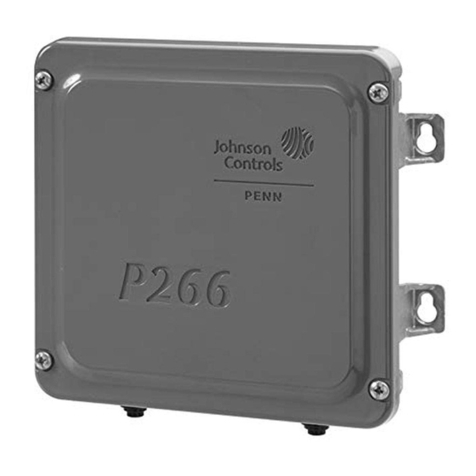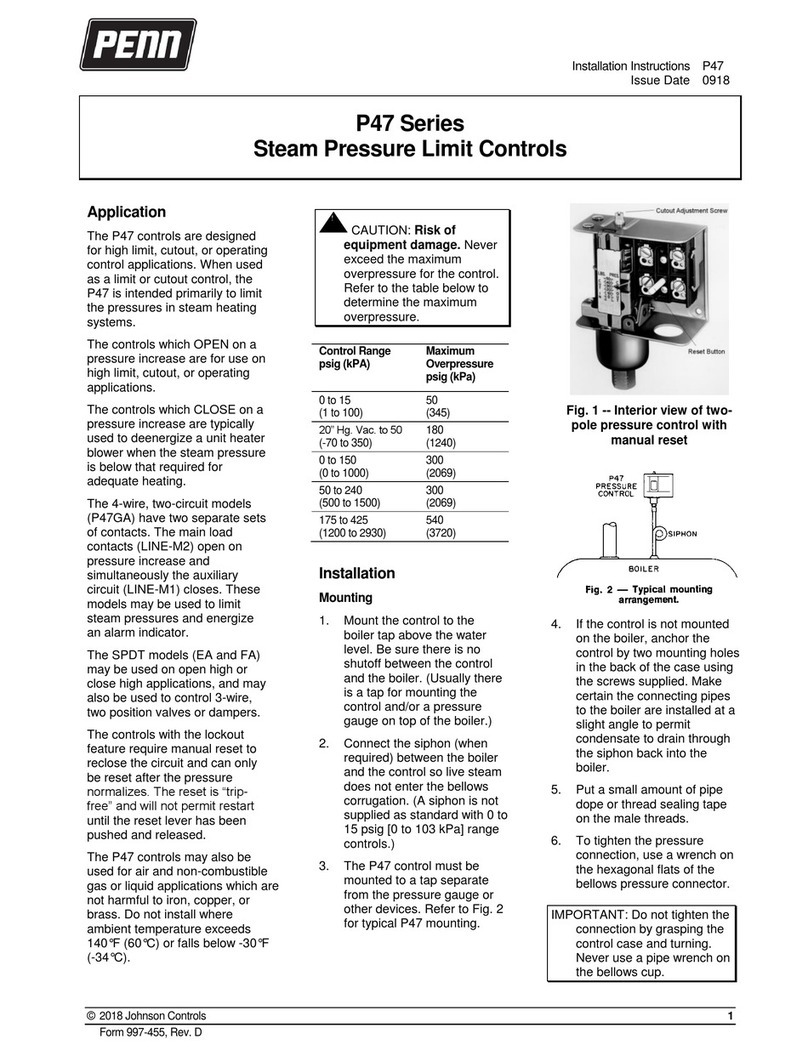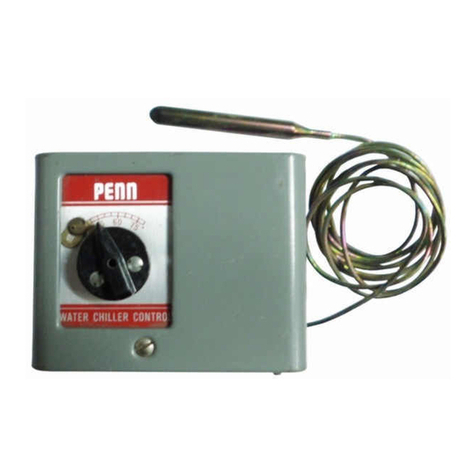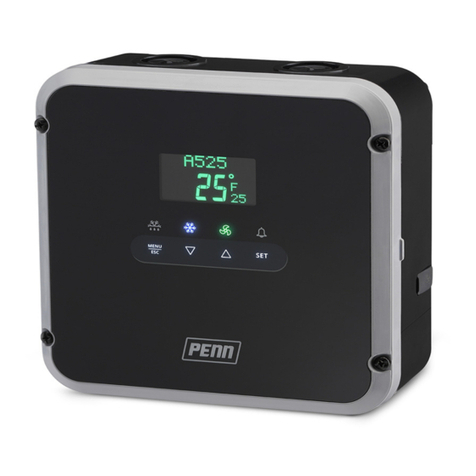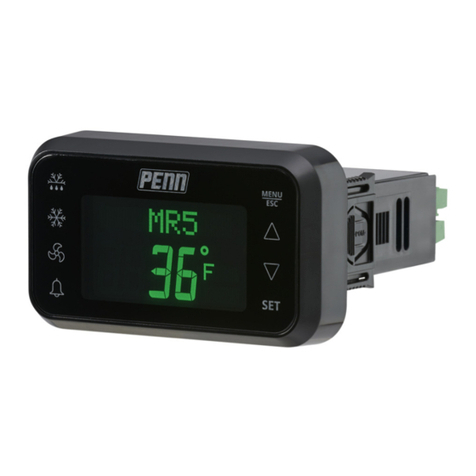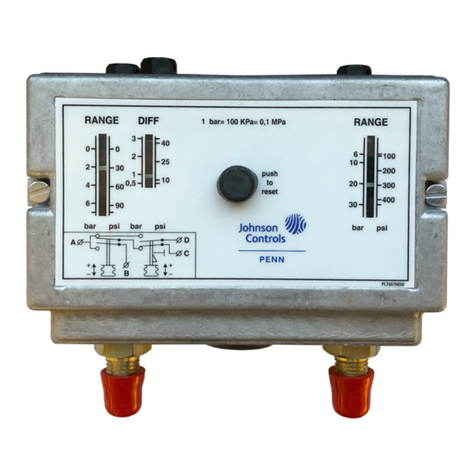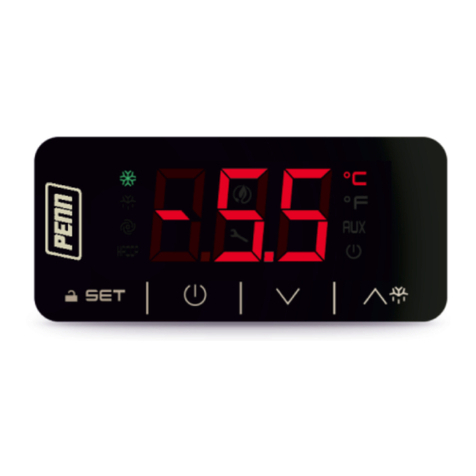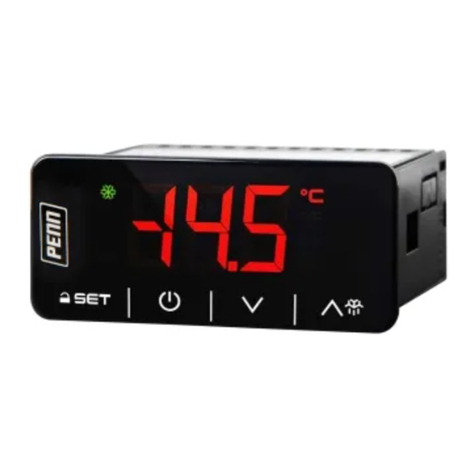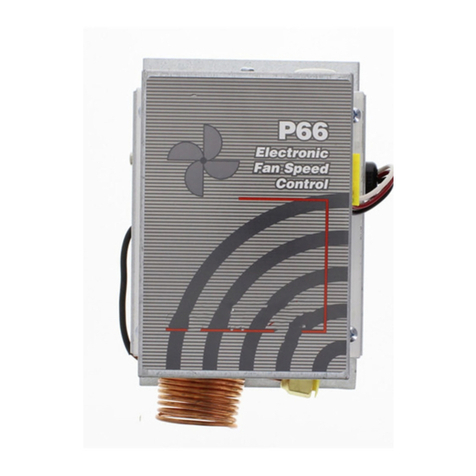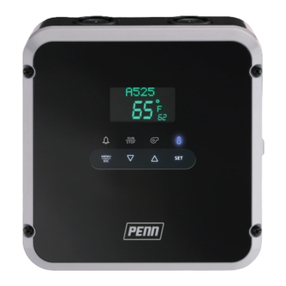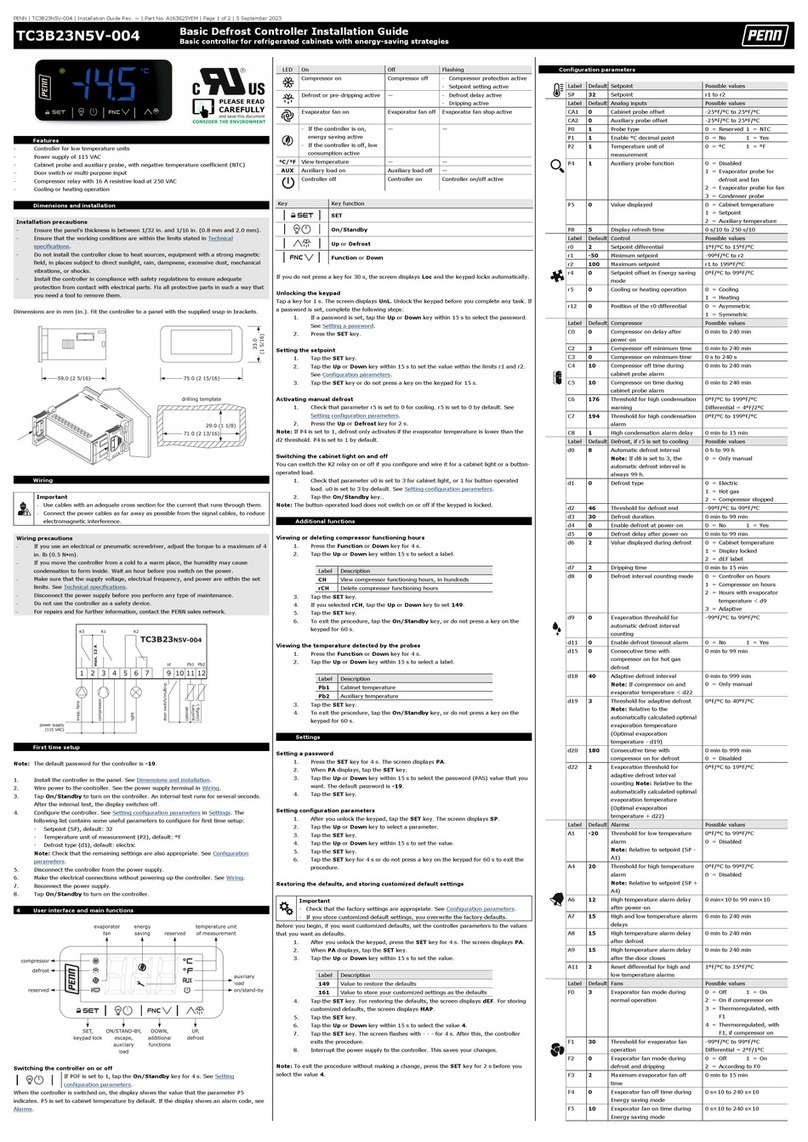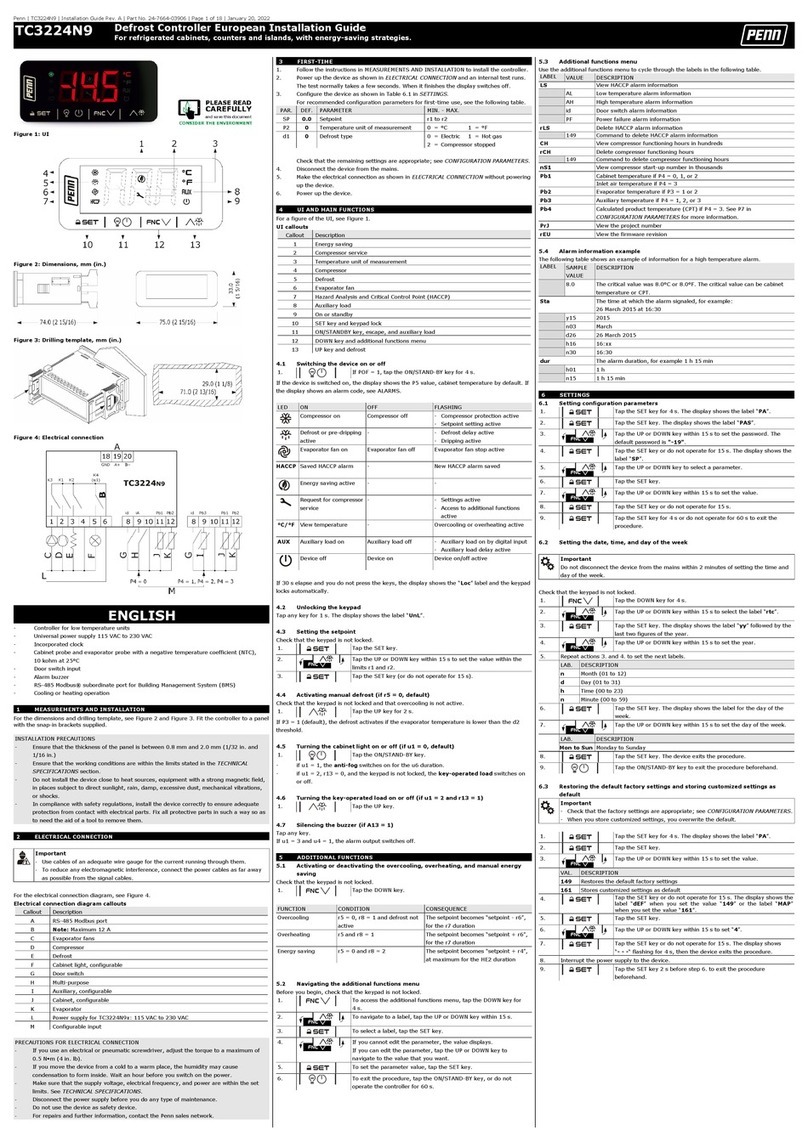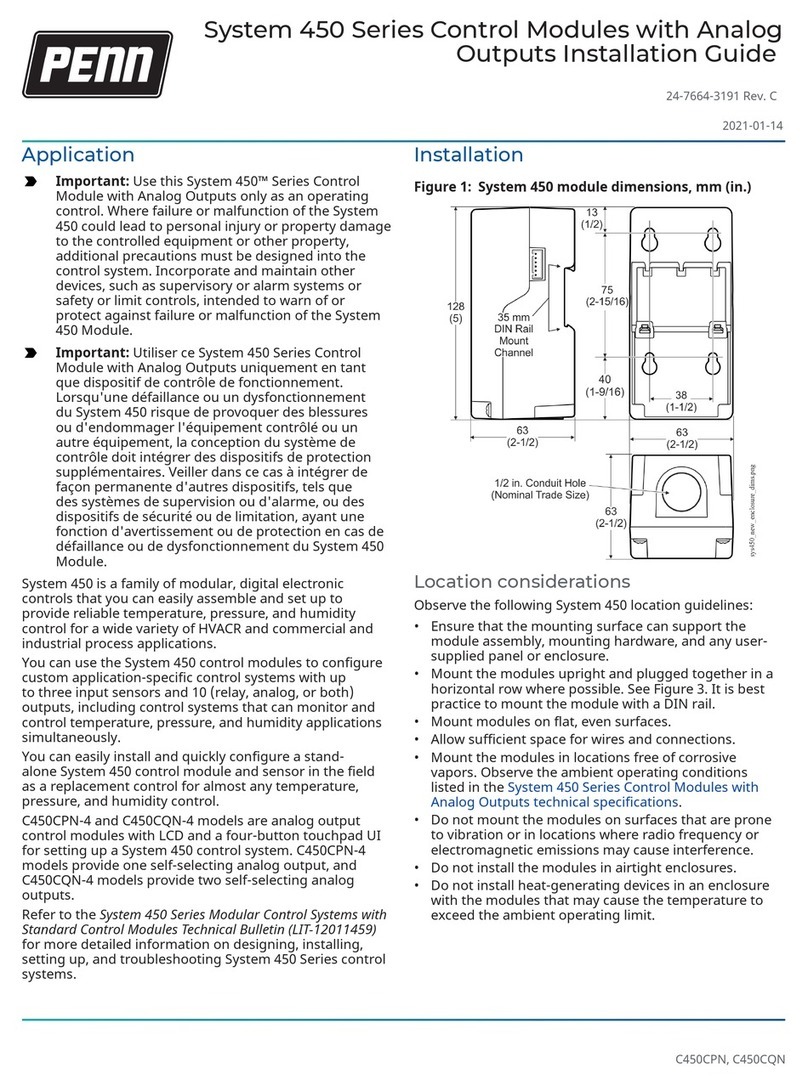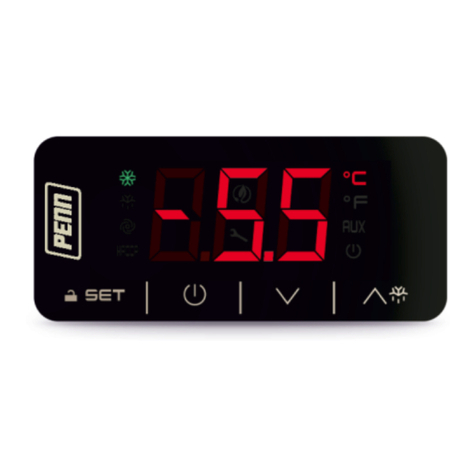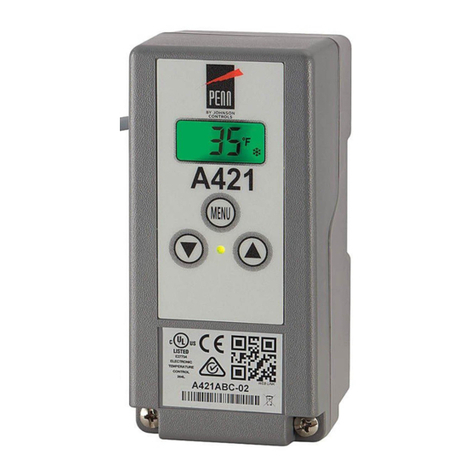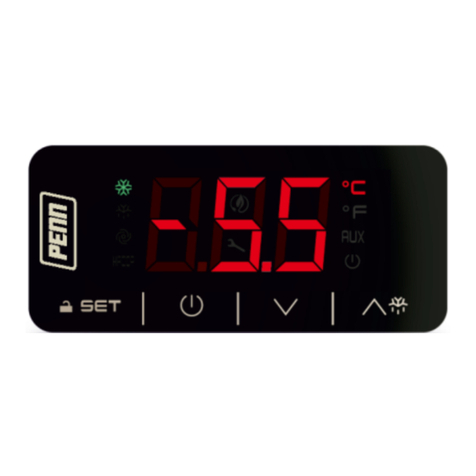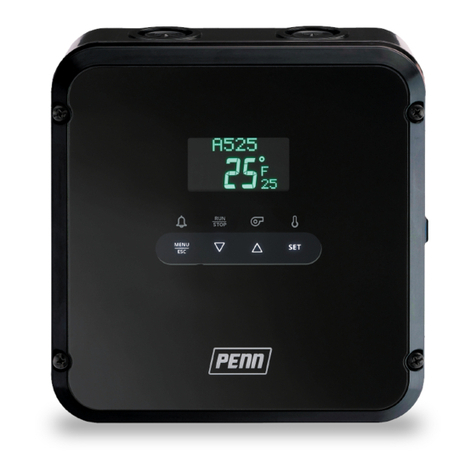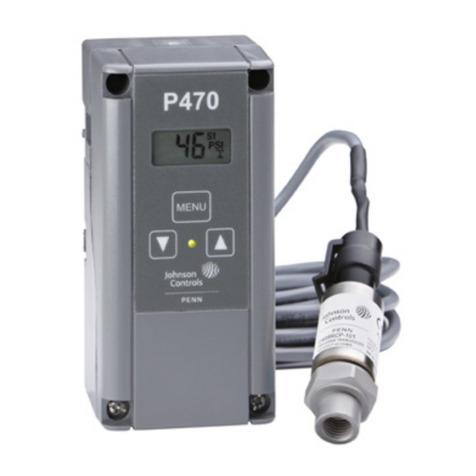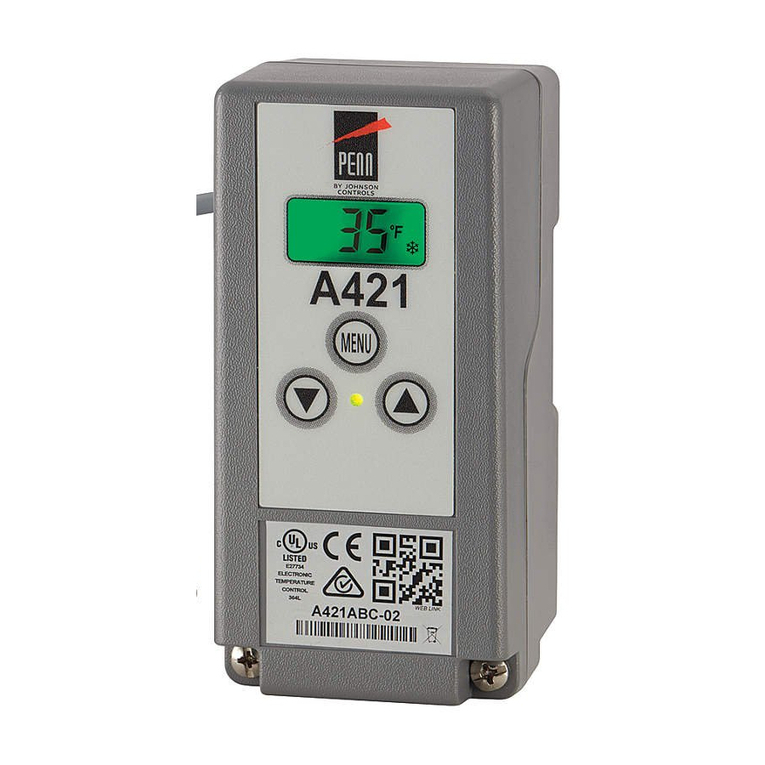
A52x Series Electronic Refrigeration Controller with Adaptive Defrost Technical Bulletin
8
Time Based Defrost Termination
Time-based defrost control terminates the defrost duration when the user-defined maximum defrost duration
elapses. The defrost duration must be of sufficient length to remove all of the ice that accumulated on the
evaporator during the previous defrost interval. Timed Defrost Termination does not require a defrost termination
sensor or switch.
Temperature Sensor Defrost Termination
Temperature sensor defrost termination uses a defrost termination sensor (Sn2) mounted on the evaporator coil to
sense the coil temperature and terminate defrost at the user-selected termination temperature. The defrost
termination temperature value is the temperature at which the evaporator coil is clear of ice. Set the termination
temperature high enough to ensure that all of the accumulated ice has melted off the evaporator coil at the
termination temperature.
Temperature Switch Defrost Termination
You can also use a line-voltage temperature defrost termination switch connected to the high-voltage binary input
(HVBIN) terminals to terminate the defrost durations in your refrigeration application. The temperature termination
switch is mounted on the evaporator coil and it has a fixed temperature termination value. You do not need to set a
defrost termination temperature value during defrost setup. When 120 to 240 VAC is detected across the HVBIN
terminals, the A52x Controller terminates the defrost duration.
Time Based Termination Overrides Temperature Termination
The maximum defrost duration time period overrides both temperature-sensor and temperature-switch defrost
termination types, if the evaporator does not reach the termination temperature.The defrost duration terminates
when the evaporator reaches the selected defrost termination temperature or the maximum defrost duration
expires, whichever occurs first.
Defrost Schedule Types
Use the A52x Controller to schedule routine defrosts or use the adaptive defrost feature, which automatically
determines the optimal time to initiate the defrost cycles for your refrigeration system.
Scheduled Defrost
You can set up Scheduled Defrost as manual or automatic. You can schedule one to eight daily defrost cycles.
Using the manual setting, you set the start times for each daily defrost cycle. Using the automatic setting, you set
only two parameters; the number of daily defrost cycles and the real-time for the first scheduled defrost. The
system automatically calculates the daily schedule for the (equal-length) defrost intervals. You can use the manual
option to change one or more of the scheduled start times after you create a schedule.
Adaptive Defrost
Adaptive Defrost adjusts the defrost schedule to achieve a user-defined defrost duration. You set up the expected
defrost duration, the first defrost interval, and a defrost termination temperature. Initially, the system uses the first
defrost interval until it learns to adapt to the existing conditions. The Adaptive Defrost system adjusts the length of
the defrost interval so that the expected defrost duration coincides with the time that the evaporator reaches the
termination temperature. See
Adaptive Defrost Setup Parameters
for more information. For Adaptive Defrost to
take place, mount the Sn2 defrost sensor or the HVBIN defrost termination switch on the evaporator. The defrost
sensor or switch determines when the defrost duration is complete.
Compressor and Evaporator Fan Start Delays
You can set up four time delay features on the A52x Controller to control the compressor and evaporator fan
operation:
• Compressor Anti-Short Cycle Delay
